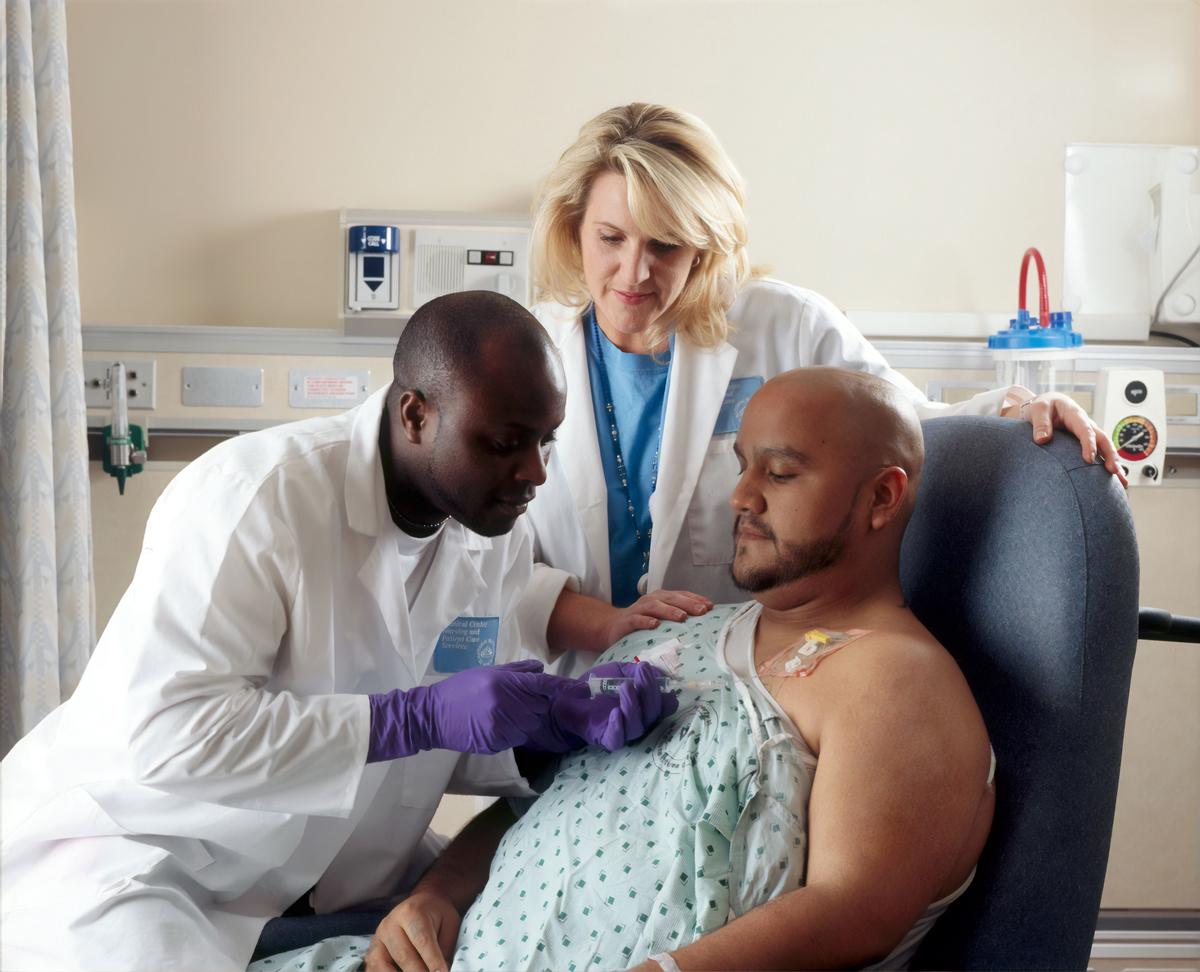Canine hemangiosarcoma, a progressive, insidious disease often referred to as the ‘silent killer’, is a cancer that primarily affects dogs. With no discernible symptoms until the disease reaches a critical stage, this form of cancer has become a grim reality for countless dog breeds worldwide. This type of cancer, which originates from the blood vessels, predominantly affects a dog’s internal organs such as the heart and spleen. Understanding this multifaceted disease, from its potential causes and risk factors to its symptoms, diagnosis, treatment, and preventive care measures, is crucial in safeguarding your pet’s health and improving survival rates. Knowledge is power, and as advocates for our pets, learning about hemangiosarcoma equips us to provide them the best care possible.
Overview of Canine Hemangiosarcoma
Dog Hemangiosarcoma
Dog Hemangiosarcoma (HSA) is a dangerous and usually fatal type of cancer that primarily affects the blood vessels (hemang- refers to blood vessels, and -sarcoma indicates a type of cancer that arises from connective tissue). Hemangiosarcoma is aggressive, has a high rate of metastasis, and tends to affect dogs more so than other animals. Rapid diagnosis and treatment are essential to extend a dog’s lifespan after an HSA diagnosis, and significant research is underway to develop effective treatments for this debilitating disease.
The Types of Dogs Typically Affected by Hemangiosarcoma
Certain breeds of dogs have been noted to be more susceptible to developing hemangiosarcoma. Though it is not entirely restricted to particular breeds, studies have shown that German Shepherds, Golden Retrievers, and Labradors, among others, have a higher predisposition towards developing this condition. The disease is also more common among middle-aged or older dogs, although it can strike at any age.
Understanding the Science Behind Hemangiosarcoma
Hemangiosarcoma begins with uncontrolled division and proliferation of endothelial cells, the cells that line the vessels of the dog’s circulatory system. Over time, these masses of cells transform into blood-filled tumors which can rupture causing sudden and severe blood loss. It’s not completely understood why this uncontrolled cell growth occurs, but genetic predisposition, environmental factors, and immunological dysfunction are believed to contribute.
Prevalence of Canine Hemangiosarcoma
Despite the fact that hemangiosarcoma is not one of the most common forms of cancer in dogs, it still proves to be a significant health issue due to its severity and high mortality rate. Approximately 5% of all canine tumors are hemangiosarcomas and they are found in approximately 50% of splenic and cardiac tumors in dogs. These figures make it one of the most common tumors found within the spleen and heart.
The Impact of Hemangiosarcoma on a Dog’s Health
The health impact of HSA on a dog can be serious and life-threatening. Hemangiosarcoma is an insidious disease, often lurking without showing any symptoms until it has reached an advanced stage. As this cancer affects the blood vessels, it can lead to rupturing of the tumors causing acute blood loss, which could trigger weakness, collapse, or even sudden death in dogs. It also has a high rate of metastasis, primarily affecting the heart, spleen, and liver, but can spread to virtually any location in the body.
The Impact and Severity of Dog Hemangiosarcoma
Dog hemangiosarcoma is an exceptionally serious and aggressive form of cancer often seen in canines. Renowned for its fast-paced spread and high rate of metastasis, it’s often found in certain breeds more than others which makes it of significant relevance in veterinary oncology research. Presently, it’s difficult to completely cure this cancer, but current treatments are capable of alleviating symptoms, enhancing life expectancies, and notably improving the quality of life in dogs afflicted with this severe disease.

Causes and Risk Factors of Canine Hemangiosarcoma
Gaining Insight into Canine Hemangiosarcoma
Canine hemangiosarcoma is identified as a highly aggressive form of cancer that principally targets the blood vessels in dogs. This cancer typically grows quickly and is known for its ability to invade other parts of the dog’s body, leading to a high mortality rate. A plethora of factors, ranging from genetic and environmental aspects to certain physical characteristics, are believed to play a part in the development of this disease.
Genetics and Hemangiosarcoma
One of the leading causes of hemangiosarcoma in canines is genetic predilection. Certain breeds are seemingly more prone to developing this type of cancer, implying a genetic component to the risk factor. Breeds such as Golden Retrievers, German Shepherds, and Labradors have an increased risk of developing the disease. Research conducted on the genomes of such dogs has shown them to have certain genetic markers relating to an increased risk of hemangiosarcoma. A study from the University of Minnesota has found a specific gene, known as the CD36 gene, that may make dogs more susceptible to this disease.
Environmental Factors
In addition to genetic predisposition, environmental factors can also play a role in the onset of canine hemangiosarcoma. While the complete nature of these environmental influences is still widely unknown, studies have suggested that exposure to certain chemicals or carcinogens could potentially increase a dog’s risk to develop the disease. For instance, dogs that are exposed to herbicides or certain pesticides have been shown to have an increased risk of hemangiosarcoma, according to a study published in the Journal of Veterinary Internal Medicine.
Physical Attributes and Exposure
Physical attributes and exposure to certain conditions have also been linked to an increased probability of developing hemangiosarcoma in dogs. The disease is more commonly diagnosed in older dogs, usually ones that are over nine years old. Further, it tends to be more prevalent in males than in females. However, researchers are still working to understand why these specific attributes might increase a dog’s risk.
Further Exploration and Comprehension
Intriguingly, canine hemangiosarcoma is a result of interconnected genetic, environmental, and physical factors. Despite that, a considerable amount of information about this disease remains elusive and necessitates additional investigations for a more in-depth understanding of its causatives and risk elements. Comprehending these underlying factors could pave the way for enhanced prevention techniques, early detection plans, and possibly more efficient treatment tactics. It’s equally critical for veterans and dog owners of prone breeds to be conversant with the disease’s symptoms and signs since the early detection can greatly improve the chances of an effective treatment and extended survival. On a brighter note, the relentless efforts in veterinary medical research instill optimism for future breakthroughs in preventing and treating hemangiosarcoma in dogs.

Symptoms and Diagnosis of Hemangiosarcoma in Dogs
Understanding Hemangiosarcoma in Canines
Hemangiosarcoma (HSA), a formidable, highly metastatic cancer form, predominantly affects our canine friends. It falls under the category of sarcomas—cancers that directly impact the blood vessels or their linings—and is notorious for its swift and ruthless spread to various parts of the dog’s body. The spleen is the most common host for Hemangiosarcoma, although instances of it affecting the heart, liver, skin, and other bodily parts are not uncommon.
Symptoms of Hemangiosarcoma in Dogs
One of the most challenging aspects of Hemangiosarcoma in dogs is that the symptoms can be subtle and easily dismissed until the disease is in advanced stages. The most common symptoms are associated with internal bleeding, as HSA often causes the blood vessels to rupture. These may include lethargy, weakness, labored breathing, pale gums, abdominal swelling, and in some cases, sudden collapse.
Additionally, non-specific signs like loss of appetite, weight loss, and increased heart rate can also be noted. If the skin form of Hemangiosarcoma is present, red or black lumps may appear on the dog’s body. The symptoms may vary depending on the location of the tumor and the extent of the disease.
Diagnostic Tools and Methods
To diagnose Hemangiosarcoma, a veterinarian uses a combination of diagnostic methods like ultrasounds, X-rays, CT scans, and biopsies. A physical examination can provide some information, but to confirm the presence and extent of Hemangiosarcoma, further investigation is required.
An ultrasound can assist in identifying masses in the spleen, heart, or liver and potentially determine the spread of the disease. X-rays of the chest area can also be useful in determining if metastasis to the lungs has occurred. The CT scan is able to offer more detailed images of the organs and can detect smaller metastases compared to X-rays.
Biopsies and cytology involve the extraction and analysis of cells or tissues from the mass to confirm the diagnosis. Due to the risk of rupture and subsequent internal bleeding, fine needle aspirate is often preferred initially over surgical biopsies. A blood test can also be carried out to assess the dog’s general health and check for signs of anemia which is common in dogs with Hemangiosarcoma.
Understanding the Importance of Early Detection and Overcoming Diagnostic Challenges
The key to enhancing the prognosis of dogs affected by Hemangiosarcoma greatly relies on its early detection. However, this is impeded by the stealthy nature of Hemangiosarcoma, which usually is diagnosed only in the latter stages of development. The symptoms are often misinterpreted as minor conditions, and significant complications like a sudden rupture of the tumor leading to an internal hemorrhage are usually what bring the cancer to attention.
Another layer of complication in the diagnosis of Hemangiosarcoma stems from its fast metastasizing capability and its propensity to manifest deeply within the body. Often when the symptoms become apparent, the cancer has already metastasized to other parts of the body. Also, it’s not uncommon for Hemangiosarcoma to be elusive on blood screenings and other routine tests, thus making the detection process even more challenging.
In summation, Hemangiosarcoma is a severe and massively destructive disease in dogs. It’s largely invisible until it has significantly progressed, necessitating comprehensive testing for confirmation. Both veterinarians and pet owners must familiarize themselves with the intricate and subtle symptoms and signs of this disease for the best chances at early detection, suitable treatment, and potentially extending the dog’s lifespan.

Treatment and Prognosis for Dogs with Hemangiosarcoma
The Relationship between Hemangiosarcoma and Dogs
Hemangiosarcoma (HSA), a highly invasive form of cancer, is predominantly seen in the canine population. It originates from the vascular endothelium or the blood vessels, hence it has the potential to develop anywhere in the body where blood vessels are present. This aggressive cancer type presents a significant threat to your dog’s health, and hence, a fast and appropriate treatment response is indispensable to increase survival rates and to improve your pet’s quality of life.
Treatment Options for Canine Hemangiosarcoma
Canine hemangiosarcoma is typically treated using a combination of different therapies, including surgery, chemotherapy, and radiation. Each treatment option has its pros, cons, and potential outcomes, and the ideal treatment plan will depend on various factors such as the specific location of the cancer, its stage, and the overall health of the dog.
Surgery for Hemangiosarcoma in Dogs
Surgery is usually the first line of treatment for HSA in dogs. It involves the complete or partial removal of the tumor depending on its size and location. The main goal of surgery is to eliminate as much of the cancer as possible to alleviate symptoms and prevent the further spread of the cancer. However, due to the aggressive and invasive nature of HSA, complete removal may not always be feasible or may be associated with significant morbidity.
Chemotherapy as a Treatment Option
Chemotherapy, usually applied post-surgery, aims to destroy any remaining cancer cells throughout the body. In dogs with hemangiosarcoma, chemotherapy can help to prolong life, slow disease progression, and improve quality of life. Commonly used chemotherapeutic drugs for this cancer include doxorubicin and cyclophosphamide, which are often provided in multi-drug protocols.
Radiation Therapy for Hemangiosarcoma
On the other hand, radiation therapy is typically used as a palliative treatment to help control symptoms in dogs with HSA, rather than as a curative treatment. While it can help to shrink tumors and alleviate pain, it is not generally able to eliminate the cancer due to its widespread nature. Radiation therapy may also be used in certain cases where surgery is not an option or in conjunction with surgery and therapy.
Prognosis and Survival
The prognosis for a dog diagnosed with hemangiosarcoma largely depends on the location and stage of the disease at diagnosis, as well as the type and effectiveness of treatment provided. Unfortunately, due to the aggressive nature of this disease and its tendency to metastasize widely before diagnosis, the prognosis is often poor.
Statistics suggest that without treatment, dogs with HSA may only survive for days to weeks. However, with proactive medical intervention like surgery and chemotherapy, survival times can potentially be prolonged. For instance, with surgical removal of the spleen and associated tumors, followed by chemotherapy, median survival times can increase to 6-8 months.
Current Research into Improving Treatment
Despite the typically poor prognosis associated with this disease, there is ongoing research aimed at improving treatment options for canine hemangiosarcoma. Current research explores a variety of avenues such as novel chemotherapy drugs, targeted therapies that specifically attack cancer cells, immunotherapy aimed at enhancing the dog’s own immune response to cancer, and stem cell therapy.
One significant breakthrough in recent years has been the use of the chemotherapeutic drug, eBAT (E. coli-derived Bone marrow Aspirate Thrombopoietic), which has shown promising results in increasing survival times in dogs with hemangiosarcoma in early clinical trials. It’s important to consult your veterinary oncologist on recent trials and treatment options that may be suitable for your dog.
Conclusion:
Dog hemangiosarcoma, a potent malignancy, poses an uphill battle for both the pet and the owner. Contemporary treatment methods like chemotherapy, radiation therapy, and surgery promise a ray of optimism by enhancing life quality for an afflicted canine. It is crucial to stay in regular consultation with a skilled veterinarian or a specialized veterinary oncologist while journeying through this trying phase, exploring the most effective treatment alternatives for your canine. Notwithstanding the hurdles, ongoing investigations continue to unearth novel prospects in the management and treatment of this relentless ailiness. This tenacious pursuit towards research and clinical trials fosters the hope of advanced treatments and better survival rates in dogs challenged with hemangiosarcoma.

Prevention and Care for Dogs at Risk of Hemangiosarcoma
Understanding Hemangiosarcoma in Dogs
Hemangiosarcoma is a formidable, malignant tumor affecting dogs, predominantly attacking the endothelial cells forming the lining of their blood vessels. Commonly, it invades the spleen, heart, and liver, but isn’t restricted to these organs, occasionally manifesting in other regions of the body. Knowledge about the risk factors and discerning early symptoms is key to either thwart this malignancy altogether or intervene promptly, paving the way for effective treatment and care.
Risk Factors
Certain breeds such as the Golden Retriever, Labrador Retriever, German Shepherd, and Boxer are at higher risk of developing Hemangiosarcoma. Older dogs and those of a large size are also more likely to be diagnosed with Hemangiosarcoma. If a dog falls into one or more of these categories, extra precautions may be necessary to enable early detection and prevention.
Prevention and Early Detection
There is no guaranteed way to prevent Hemangiosarcoma. The cancer is often diagnosed at an advanced stage due to its asymptomatic nature in early stages. However, regular vet check-ups and routine blood tests can help in early detection. Ultrasonography can also be used to detect masses in the spleen or heart. Moreover, owners of at-risk breeds should be aware of the common signs of Hemangiosarcoma, which can include lethargy, loss of appetite, weight loss, and sudden collapses due to internal bleeding.
Care for At-Risk Dogs
Owners of at-risk dogs can take steps to ensure their pet’s overall health is as robust as possible. This can include maintaining a balanced diet, ensuring plenty of physical activity, and avoiding exposure to known carcinogens (such as second-hand cigarette smoke). Regular veterinary check-ups are essential, as the vet can monitor the physical condition of at-risk dogs and recommend any necessary diagnostic tests or preventive measures.
Diet and Lifestyle Changes
Feeding a dog a balanced and nutritious diet can boost their overall health. Some veterinarians suggest a low-carbohydrate, high-protein diet which may be beneficial for dogs with cancer. Antioxidant-rich foods can also aid in the overall wellbeing of dogs, potentially slowing down the development of tumors. Suitable physical activity is also key, but should be moderated based on the dog’s health status, age, and breed.
Monitoring Methods
In addition to regular veterinary check-ups, at-home monitoring is also crucial. Regularly checking on your dog’s behavior patterns and any physical changes can help facilitate early intervention. Signs of discomfort, changes in their activity levels, or abnormal behaviors might indicate potential health issues and should be reported to the vet immediately.
Palliative Care Options
In cases where Hemangiosarcoma has been diagnosed, providing the best possible quality of life for the dog is essential. Palliative care, which can include pain management and treatment of symptoms, is often a crucial part of overall care. This may involve medications for pain management, anti-inflammatories, and medications that help to manage any secondary symptoms like nausea. It’s also important to provide an environment that minimizes stress and maximizes comfort for the dog.
Conclusion
While there is no guaranteed prevention against Hemangiosarcoma, an awareness of the risk factors and signs can lead to early detection. Regular vet check-ups, an appropriate diet, and a good lifestyle can help manage the overall health of at-risk dogs. Meanwhile, caring for a dog with Hemangiosarcoma focuses on maintaining their quality of life through palliative treatment, regular monitoring, and a stress-free environment.

Being a responsible pet owner goes well beyond daily walks and routine vet visits. It calls for a deep comprehension of potential health issues dogs face, such as hemangiosarcoma. Informed and responsible dog ownership entails understanding the preventative measures, identifying the symptoms, and seeking early diagnostic procedures. More importantly, familiarity with potential treatment options and making necessary lifestyle modifications for your ailing pet could potentially prolong their life. It’s prudent to remember that while being informed is of great benefit, professional advice from a veterinary expert should be the primary source of action when it comes to managing this complex disease. The road to fighting canine hemangiosarcoma is marked by diligence, tenacity, and unwavering love for your furry companion.

